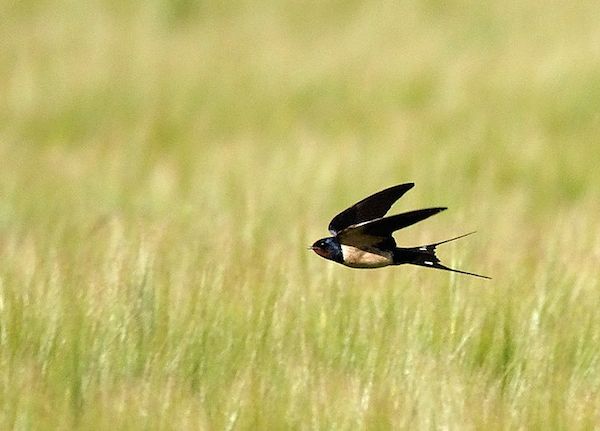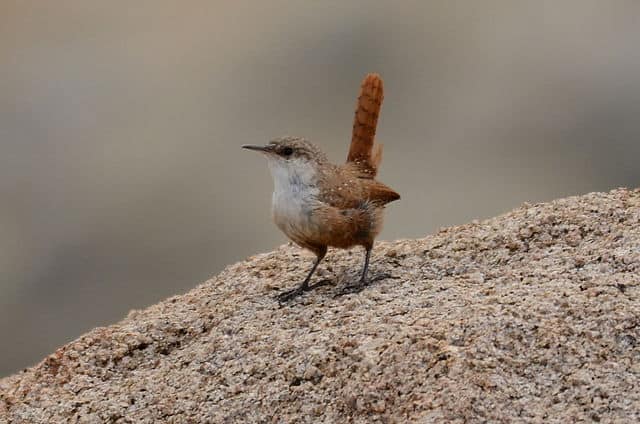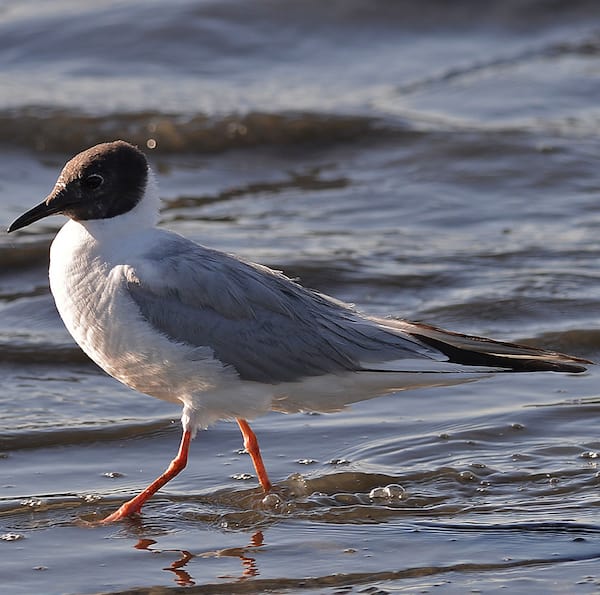Look for
One early naturalist estimated that a barn swallow that lived 10 years would fly more than two million miles, enough to travel 87 times around the earth. This species seems to define what it means to be at home in the air, and it has been compared to an albatross in its ability to stay effortlessly aloft.
One of the most familiar and beloved birds in rural America, the barn swallow is welcomed everywhere as a sign of spring. Glossy blue-black above and orange below, the barn swallow is the only American swallow that has a true “swallow tail,” with an elongated outer pair of tail feathers.
Males and females are similar, but females are not quite as glossy or highly colored, and the fork in their tails is not quite as pronounced. Like all swallows, they have short legs and rather weak feet used for perching, not walking.
Listen for
More vocal than most other swallows, Barn Swallows seem to chatter almost constantly. Main sound is a rapid, chortling series of squeaky notes: pit-pitpit-pit-pit-pitpit.
Find It
A bird of rural areas and farmlands, the barn swallow may be found over any open area, such as pastures, fields, and golf courses, as well as lakes, ponds, and rivers.
It has adapted well to humans and is not shy of people, nesting close to settled areas as long as it has open space for feeding. Barn swallows travel in great flocks during migrations, often in company with other swallow species. They arrive in most of their U.S. range in April and leave in early to mid-fall.
Feed it
Foraging almost entirely on the wing, the barn swallow takes a variety of insect prey from flies and locusts to moths, grasshoppers, bees, and wasps. Occasionally small berries or seeds are added to the diet, but this is uncommon. Only in bad weather will barn swallows feed on
the ground.
Nesting Behavior
Nothing says “country” more than a pair of barn swallows zipping in and out of the open doors of a working barn, darting after insects and chattering incessantly. Sometimes two or three pairs will share a favored site.
The nest itself is a cup of mud and grass, lined with feathers and placed on a rafter or glued under an eave. Besides barns, barn swallows may use other open buildings, covered porches, or the undersides of bridges or docks. During second nestings, immatures from the first brood help feed and care for their younger siblings.
WOW!
The Barn Swallow is also found in Europe and Asia, where it is known simply as Swallow. Early European settlers in North America were pleased to find this familiar bird in their new homeland.




